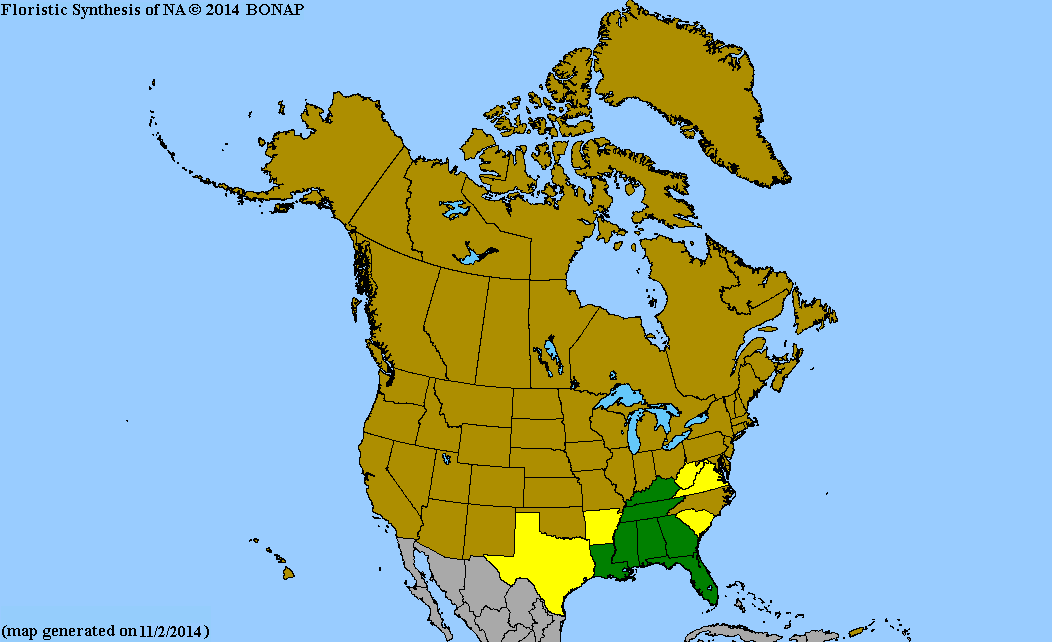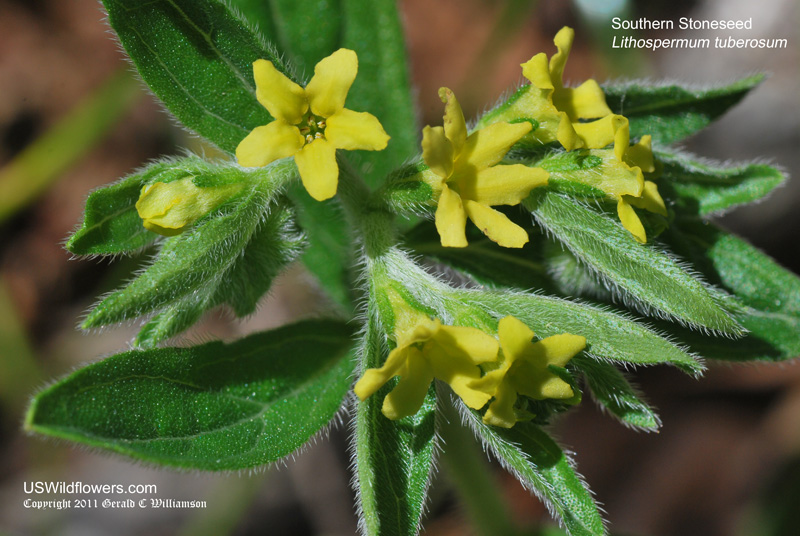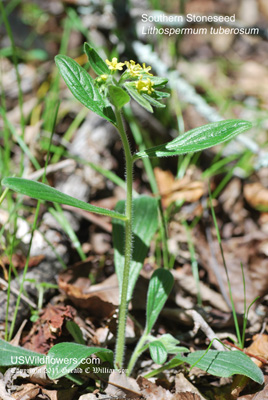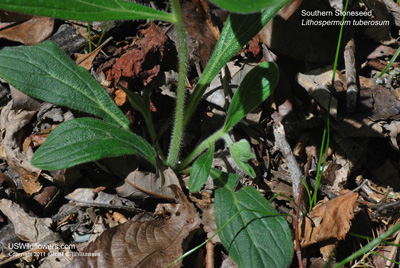Wildflowers of the United States | |||||||||||||
| |||||||||||||
Lithospermum tuberosum - Southern Stoneseed, Tuberous Stoneseed, Tuberous Gromwell. A hairy plant growing from 1 to 2 feet tall in forests with underlying limestone rocks in the southeastern United States. While the genus name refers to the very hard seed, the species epithet refers to the tuber-like root. I photographed this plant after author Jay Clark pointed it out to me as we crossed a limestone outcropping on a deer trail we were walking in one of the few places in Georgia where it can be found. | Found in: AL, AR, FL, GA, KY, LA, MS, NC, SC, TN, TX, VA, WV Leave comments on Lithospermum tuberosum at this link.   Map courtesy of The Biota of North America Program. Map color key Search Our Database: Enter any portion of the Scientific, Common Name, or both. Do a general Google search of the entire site: #ad
|
| #ad
| | |||||||||
|
Commercial / Cookie Notice Looking for Wildflowers for a specific state? Check here: | |||||||||||||
|
All content except USDA Plants Database map Copyright Gerald C. Williamson 2025 | |||||||||||||
Code Update 20230302



